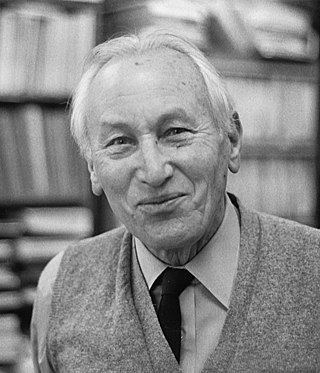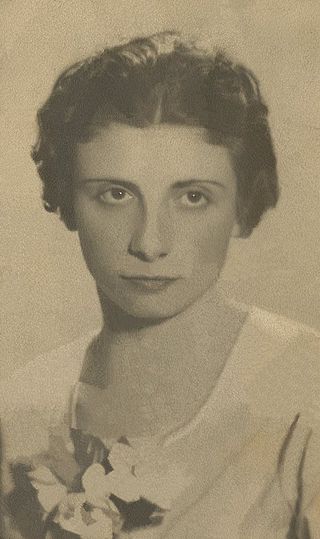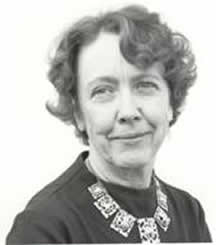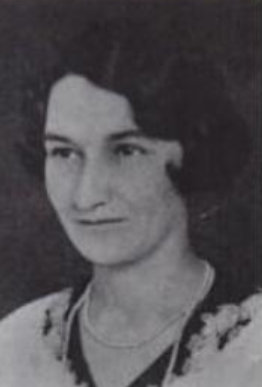Related Research Articles
Mexia is a city in Limestone County, Texas, United States. The population was 6,893 at the 2020 census.

Fuchsia is a genus of flowering plants that consists mostly of shrubs or small trees.

Clinton Hart Merriam was an American zoologist, mammalogist, ornithologist, entomologist, ecologist, ethnographer, geographer, naturalist and physician. He was commonly known as the 'father of mammalogy', a branch of zoology referring to the study of mammals.

Katherine Esau was a pioneering German-American botanist who studied plant anatomy and the effects of viruses. Her books Plant Anatomy and Anatomy of Seed Plants are key texts. In 1989, Esau received the National Medal of Science "In recognition of her distinguished service to the American community of plant biologists, and for the excellence of her pioneering research, both basic and applied, on plant structure and development, which has spanned more than six decades; for her superlative performance as an educator, in the classroom and through her books; for the encouragement and inspiration she has given to a legion of young, aspiring plant biologists; and for providing a special role model for women in science." When Katherine Esau died in year 1997. Peter Raven 'Director of Anatomy and Morphology' of 'Missouri Botanical Garden' remembered that she absolutely dominated the field of plant Biology even at the age of 99.

Ynés Enriquetta Julietta Mexía was a Mexican-American botanist notable for her extensive collection of novel specimens of flora and plants originating from sites in Colombia, Mexico, and Peru. She discovered a new genus of Asteraceae, known after her as Mexianthus, and accumulated over 150,000 specimens for botanical study over the course of a career spanning 16 years enduring challenges in the field that included poisonous berries, dangerous terrain, bogs and earthquakes for the sake of her research.

Nina Foch was an American actress who later became an instructor. Her career spanned 6 decades, consisting of over 50 feature films and over 100 television credits. She was the recipient of numerous accolades, including an Academy Award nomination for Best Supporting Actress, and a National Board of Review Award for Best Supporting Actress. Foch established herself as a dramatic actress in the late 1940s, often playing cool, aloof sophisticates.

Alice Eastwood was a Canadian American botanist. She is credited with building the botanical collection at the California Academy of Sciences in San Francisco. She published over 310 scientific articles and authored 395 land plant species names, the fourth-highest number of such names authored by any female scientist. There are seventeen currently recognized species named for her, as well as the genera Eastwoodia and Aliciella.
Cornelius Herman ("Neil") Muller, born Müller, was an American botanist and ecologist who pioneered the study of allelopathy and oak classification.

Cora Alice Du Bois was an American cultural anthropologist and a key figure in culture and personality studies and in psychological anthropology more generally. She was Samuel Zemurray Jr. and Doris Zemurray Stone-Radcliffe Professor at Radcliffe College from 1954. After retirement from Radcliffe, she was Professor-at-large at Cornell University (1971–1976) and for one term at the University of California, San Diego (1976).

Kenneth Vivian Thimann was an English-American plant physiologist and microbiologist known for his studies of plant hormones, which were widely influential in agriculture and horticulture. He isolated and determined the structure of auxin, the first known plant hormone. He spent most of his early career (1935–1965) at Harvard University, and his later career at the University of California, Santa Cruz. He is credited with identifying indole-3-acetic acid as an auxin.

Alicia Lourteig (1913–2003) was an Argentine and French botanist, world specialist in Oxalidaceae.
Helen Margaret Gilkey (1886–1972) was an American mycologist and botanist, as well as a botanical illustrator and watercolor artist She was born on March 6, 1886, in Montesano, Washington, and moved to Corvallis, Oregon, with her family in 1903. She died in 1972 at the age of 86.
Mildred Esther Mathias was an American botanist and professor.

Helen Niña Tappan Loeblich was an American micropaleontologist who was a professor of geology at the University of California, Los Angeles, a United States Geological Survey (USGS) biostratigrapher, and a scientific illustrator whose micropaleontology specialty was research on Cretaceous foraminifera.

Olga Aleksandrovna Fedchenko or Fedtschenko was a Russian botanist. Rosa fedtschenkoana, which is found in Asia, was named in her honour.

This is a timeline of women in science, spanning from ancient history up to the 21st century. While the timeline primarily focuses on women involved with natural sciences such as astronomy, biology, chemistry and physics, it also includes women from the social sciences and the formal sciences, as well as notable science educators and medical scientists. The chronological events listed in the timeline relate to both scientific achievements and gender equality within the sciences.

Janice Carson Beatley was an American botanist, known for her fieldwork on the forests of Ohio and the flora of the Nevada Atomic Test Site. Beatley was Professor of Biological Sciences at the University of Cincinnati. She has three plant species named in her honour including Astragalus beatleyae.
Dennis Eugene Breedlove was an American botanist, herbarium curator, and plant collector. He is "best known for his collections and floristic studies in the Mexican state of Chiapas, and his ethnobotanical work in that state with various collaborators."

Helena M. L. Forbes was a Scottish botanist, plant collector and curator who worked primarily on South African flora.

Fuchsia bracelinae is a species of Fuchsia found in Brazil.
References
- 1 2 3 4 Last name Bracelin. "Bracelin, Nina Floy (1890-1973) on JSTOR" . Plants.jstor.org. Retrieved 2020-01-15.
- ↑ "The Academy's Pioneering Women in Science | California Academy of Sciences". Calacademy.org. 2015-12-21. Retrieved 2020-01-15.
- 1 2 Radcliffe, Jane. "Biographical Sketch" (PDF). California Academy of Sciences. Retrieved 2020-01-15.
- ↑ "Finding Aid to the Ynés Mexía papers, 1872-1963, 1872-1963 (Bulk 1910-1938)".
- ↑ "Mexía, Ynés 1870-1938 - Social Networks and Archival Context". Snaccooperative.org. 1938-07-12. Retrieved 2020-01-15.
- ↑ "THE REAL DIRT ON: Ynés Mexía: A Short (But Impressive!) Career in Botany". September 2017.
- ↑ "Late Bloomer: The Short, Prolific Career of Ynes Mexia - Science Talk". Nybg.org. 2015-02-26. Retrieved 2020-01-15.
- ↑ International Plant Names Index. Bracelin.